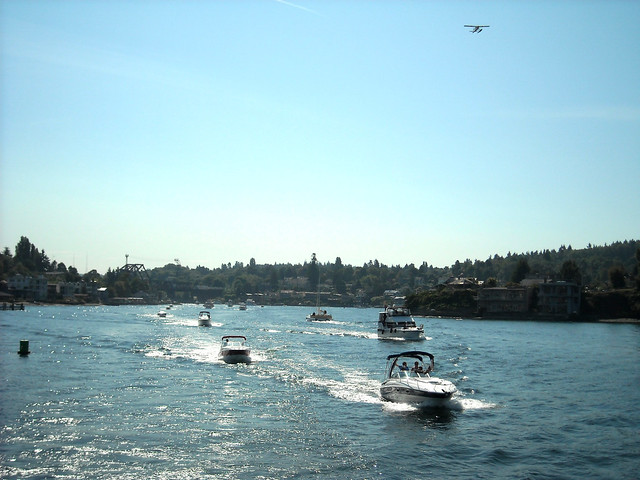Boating is an exciting past time that almost anyone can participate in and enjoy. It’s a fun-filled, stress-reducing, outdoor activity that can provide hours of entertainment and excitement. However, in order to have an enjoyable experience and reduce the risk of danger, it is essential that all boating newcomers familiarize themselves with some of the most important aspects of boating such as the types of boats, boating terminology, and safety tips.
Types of Boats

Image via Flickr by jdnx
There are many different types of boats, all of which can be broken down into dozens and dozens of categories.
First of all, all boats can generally be classified into three main types:
- Motorboats – Engine-powered
- Sailboats – Wind/sail-powered
- Man-powered boats – Human-powered, such as kayaks
Three of the most popular boats for families and adventurers include:
Water Sports Boats
These boats are designed to be sleek, powerful and fast with enough speed and maneuverability to handle any type of water sport including wakeboarding, water skiing, and tubing.
Pontoons
These boats are usually flattish in shape and rely on tubes (pontoons) to float. These are commonly used on lakes and other small bodies of water and are ideal for cruising and fishing, Newer generations are powerful enough to pull water skiers and wake boarders.
Cabin Cruisers
Cabin cruisers are larger and more spacious than most small powerboats and can accommodate several passengers. They often have amenities such as sleeping quarters, a galley, and a head, making them ideal for cruising and extended trips.
Common Parts of Boats
Before you get a boat or even your boating license, it’s imperative you know the common parts of all boats. These include:
- Bow – Front of a boat
- Stern – Rear part of a boat
- Port – Left side of the boat (when facing forward)
- Starboard – Right side of a boat (when facing forward)
- Transom – Stern cross-section of your boat
- Cleat – A metal fitting to which a rope or line can be secured
- Gunwale – Top edges of the sides of a boat
How to Stay Safe While Boating
Whether you are a beginning boater or a seasoned sailor, it’s important that you always follow the rules and regulations while on the water in order to stay safe. Some of these are common sense, while others are learned.
- Everyone on board should wear a life jacket.
- Carry safety equipment including a fire extinguisher, a tool kit, a first aid kit, a horn, and a working radio to call for help if needed.
- File a Float Plan that describes your boat, itinerary and passengers and leave with someone on shore in case of an emergency.
- Protect against propellor strikes – ensure all passengers are accounted for before starting the engine, wear an emergency cut-off switch at all times, and keep people from swimming near it.
- Boat sober – never operate a boat while under the influence of alcohol or drugs.
Not much beats spending a day on the water in your new boat with friends and family! Just remember to familiarize yourself with boats in general, and always follows the rules and regulations.


